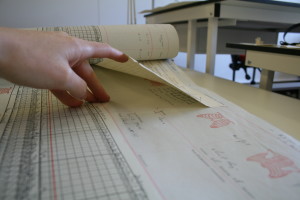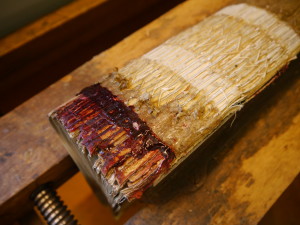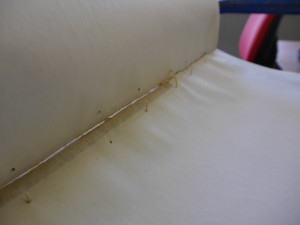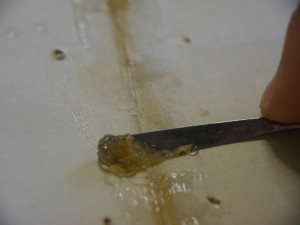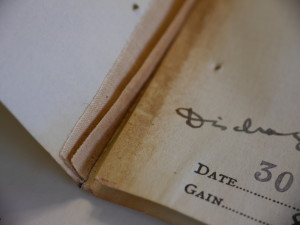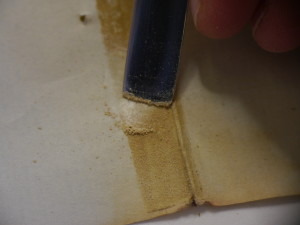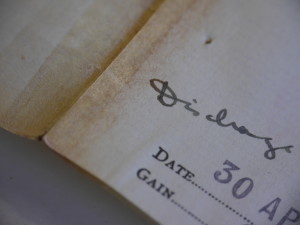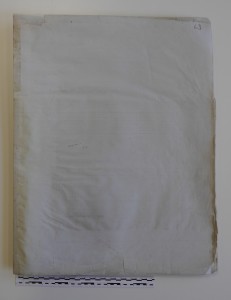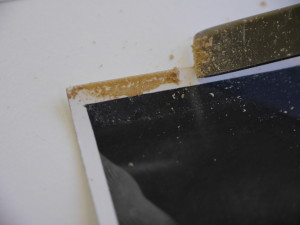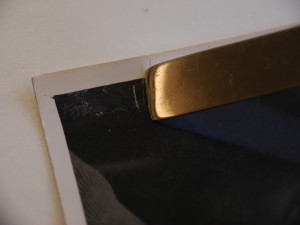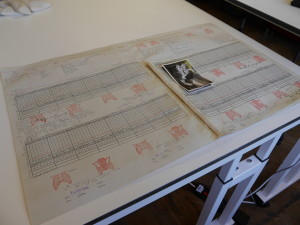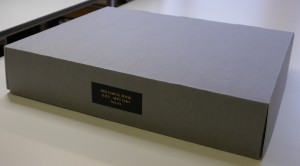Scheduling repairs
As part of the Twixt Thistle and Rose Project we must identify and schedule for conservation any items that require physical repairs. This could mean simple patching repairs to a paper document, relaxing and flattening parchment deeds or taking apart and restoring a full volume.



The primary purpose is to ensure that the record can be read without further deterioration but it is also important to retain as far as possible the original character of the document or volume.
Visiting the conservation workshop
Last Monday, Linda and I visited the company that have carried out conservation work for the Berwick Record Office for about 30 years – Riley, Dunn and Wilson. This firm has been in the business of printing, book restoration and bookbinding since 1909 – they were originally based in Edinburgh.
Before we travelled, we photographed the items in their current state and created a repair schedule that summarized the individual treatment each item required.

We took a few volumes and a bundle of large parchment deeds with us so that an estimate of costs could be made before commissioning the work. We discussed the repair appropriate for each item, whether there were loose items inside a volume (if so, how they should be treated), what kind of bindings should be provided and whether protective boxes should also be supplied.

We were also able to see the bookbinders and paper repairers at work – both fascinating, almost entirely manual, occupations. The firm also carries out heritage digitization – an alternative means of providing access when physical repair is impossible or there is expected to be very heavy use use of the original, repaired or not.

Before…
Some time ago the first Guild Enrolment Book was repaired and this photo shows what it was like before the conservation work started – badly eaten away and unfit for public use.


…and after …

B 6/1 The First Guild Book of Enrolment 1570-1636 after repair

In-house conservation
Basic conservation work is also undertaken by the Archives team. For example, cleaning dust and dirt from paper and parchment, boxing and wrapping documents or volumes and monitoring the strong room constantly for changes in humidity or the presence of pests. Project volunteers can be involved in cleaning or re-boxing some of the records. Please email us if you are interested (ttar@northumberland.gov.uk) or attend the sessions we will be holding at the Archives on the 23rd and 26th March.

